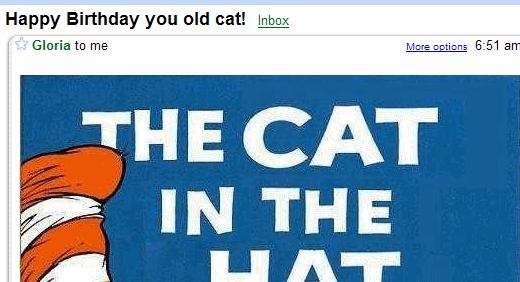You may receive an email that has information you would like to send on to another person. This is called forwarding. With the email message open, click the forward button. Almost every email program has a forward button or link, some more elaborate than others.
![]()


If you do not see the Forward button in Outlook Express, right-click the menu bar to produce a menu, then choose Toolbar.

Or open the Message menu and choose Forward.
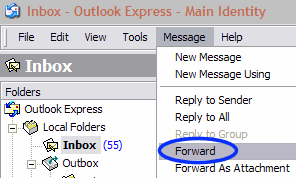
Or you can right-click on the message in the message list and choose forward from the menu.

Whatever method you choose, you will see a new message containing the content you wish to forward. It will probably have the subject field filled in. Just add a recipient name and click Send. But don't stop here. Read on for some forwarding etiquette.

You have probably received an email that has been forwarded several times. When you open the email, you have to scroll through a series of headers like the ones below to finally get to the message.
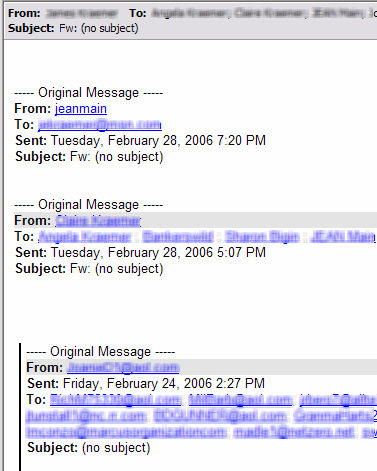
If you choose to forward the email on to your own friends, spare them the inconvenience of scrolling through yet another set of headers.
Click the Forward button to create the new outgoing message featuring the forwarded content. Before you click send, cut or delete the old headers.
Highlight them by holding down your left mouse button and dragging the mouse from the top of the headers down to the bottom of the headers. With the headers highlighted, tap the delete button on your keyboard, or use your right mouse button to produce a menu, and choose cut from that menu. The recipient recieves the message without having to wade through cyber debris.
While you are at it, get rid of that old Fwd: and add your own personal subject message to your friend.
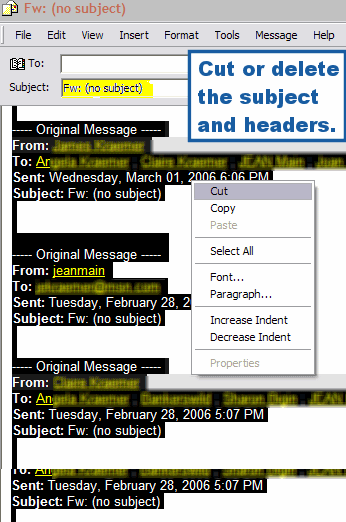
When you forward an email with an attachment, you send the original email plus yours. Now if you forward an email that has already been forwarded, you add your email to the original and the forwarded one. So each time the email is forwarded, it is burried deeper in email wrappers. If the recipient wants to see the message, she has to open each email in the forwarding cycle. Below, I had to open six emails to finally see the message. If I had not been a Cat in the Hat fan, I may have given up before reaching the joke.
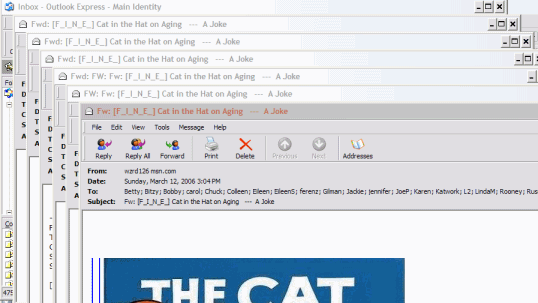
The joke turned out to pretty good, so I decided to forward it to someone else. But I decided to spare them the inconvenience of opening layer after layer of email.
With the email message featuring the actual message/joke open, I clicked the Forward button. This opened a new window with subject and message in place. All I had to do was add the email address. But I went a step further and deleted the extra headers and the old subject line. (To delete: highlight, right click, cut.)
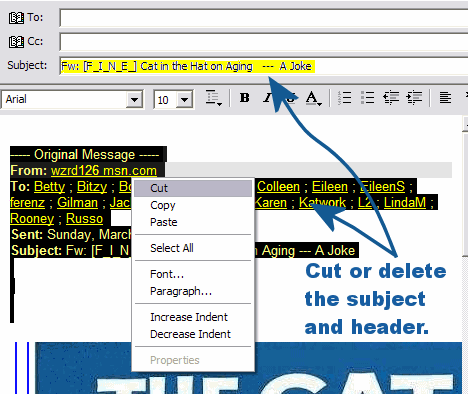
I added my own subject. I could have also added my own message in the message window.
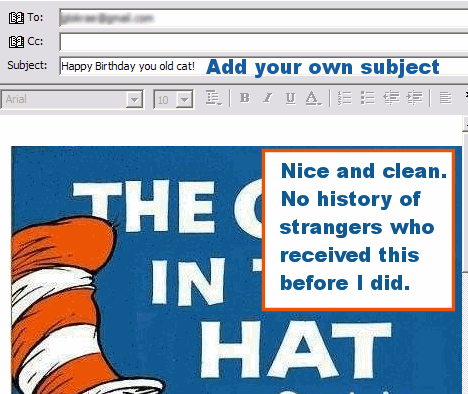
The recipient receives a clean message without having to sift through a history of email messages.
